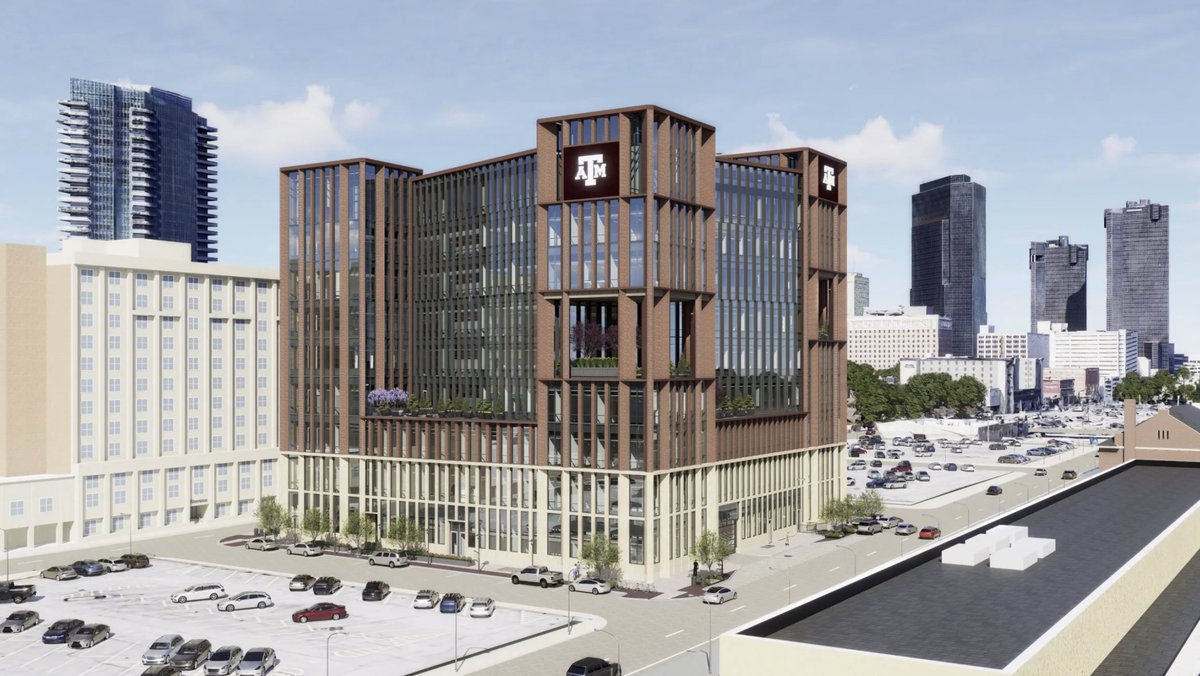Texas A&M-Fort Worth’s campus downtown has embraced a Nike just-do-it mentality from the start. It has been boldy Aggie in its daring, shrugging off limitations the way Johnny Football once shed tacklers.
And if enrollment numbers are any indication, inspired students are following fast.
The Texas A&M System’s increased presence here has fueled a steady rise in student numbers. This fall, more than 5,200 students are expected to be enrolled across the A&M System’s Fort Worth campuses, including the presence downtown, Tarleton State’s satellite site, and at Tarrant County College, an A&M engineering partner.
That’s up more than 360 from a year ago and more than 1,500 from five years ago.
Yet the increase — and however those numbers continue to grow over the coming years — isn’t the goal. Texas A&M’s approach in Fort Worth has been about meeting the educational and workforce needs of both the local business community and the broader region, not simply chasing enrollment targets.
“We’re not trying to get to a particular number,” says Bobby Ahdieh, Texas A&M Law School dean and COO of Texas A&M-Fort Worth. “We’re saying, ‘Is there a need out there that we can potentially meet?’ Let’s go and try to do that.”
Ahdieh attributes the growth to a mix of local engagement and strategic programming. The Texas A&M Engineering Academy at Tarrant County College, for example, allows students to complete foundational coursework locally before transferring to College Station.
The flexibility appeals to both students who want to stay closer to home and those planning to return to the region after graduating. “We’re enabling students who otherwise would go further afield to stay,” Ahdieh says. “And we’re drawing others who may eventually return.”
There are others who are “studying abroad” in Fort Worth. That is, those in College Station or in Stephenville at Tarleton State spending a semester here with visions of beginning a career here.
Ultimately, the campus will serve as a Tier One hub for research and education, anchored by a broad mix of programs in innovation, workforce development, technology, and public service. Offerings will span Texas A&M University, Tarleton State, the School of Law, and A&M’s engineering, agriculture, emergency management, and health science disciplines. Many of those are already being offered.
One program that has become immensely popular is the school’s Master of Laws and Master of Legal Studies curriculum. There are now upwards of 1,300 students enrolled in the program, far more than actual law school students. It appeals because there are increasingly more professionals who, though they don’t need a law degree, require a basic understanding of law, regulation, compliance, contracting, and HR. The program is specific to 11 industries.
Ahdieh jokes that the law school will one day be bigger than A&M’s engineering school.
“That’s not going to happen, obviously, but the growth rate has been insane,” he says.
A big part of the mission, of course, is appealing to the proverbial “best and brightest” from across the country to come to Fort Worth to study and conduct research.
“If we’re being honest all over the world and bring ’em to Fort Worth, and then a lot of those folks will stay here.”
And even if they don’t stay, they’ll likely go back with a big bullhorn talking about the great qualify of life here.
“The one that people fight me on most is what about the person we bring in from Houston or New York or London and then goes back, right? Wasn’t that a waste? Not at all. I mean, to my mind, those folks become champions of Fort Worth, of North Texas, of Texas, across the state, across the country, and across the globe. And so even that population, I think of as really serving an important function for us as a city, a region, and a state.”
All of this will become more evident as the campus and innovation district — by the way, don’t call it that — build out in the years to come. The Law and Education Building is set to be completed by this time next year. Around that same time, Ahdieh expects construction to be underway on the second and third buildings — the Research and Innovation Building and the Performance, Visualization and Fine Arts Building. A&M and civic leaders now envision as many as five buildings.
“They are excited about the plan for building four,” Ahdieh says. “And, so, I expect sooner versus later we will start that conversation as well.”
Among those is new Chancellor Glenn Hegar and Bob Albritton, a Fort Worth resident who is the system’s new chairman of the board of regents, which, as a whole, Ahdieh reminds, has been an enthusiastic supporter of the Fort Worth project. John Sharp, the soon-to-be former chancellor, and the entire board ran with it. Mike Hernandez is another member of the board from Fort Worth.
“Chair Albritton really has jumped in full steam. We’ve had multiple meetings. He has been actively involved in meeting with folks and engaging folks,” Ahdieh says. “Bob knows this community. He loves this community. He has been here for a long, long time. And, so, for him, an opportunity for A&M to be impactful, not just in terms of its Land, Sea, and Space grant mission to our state and frankly to our country, but for our community in particular, I think is hugely significant.”
